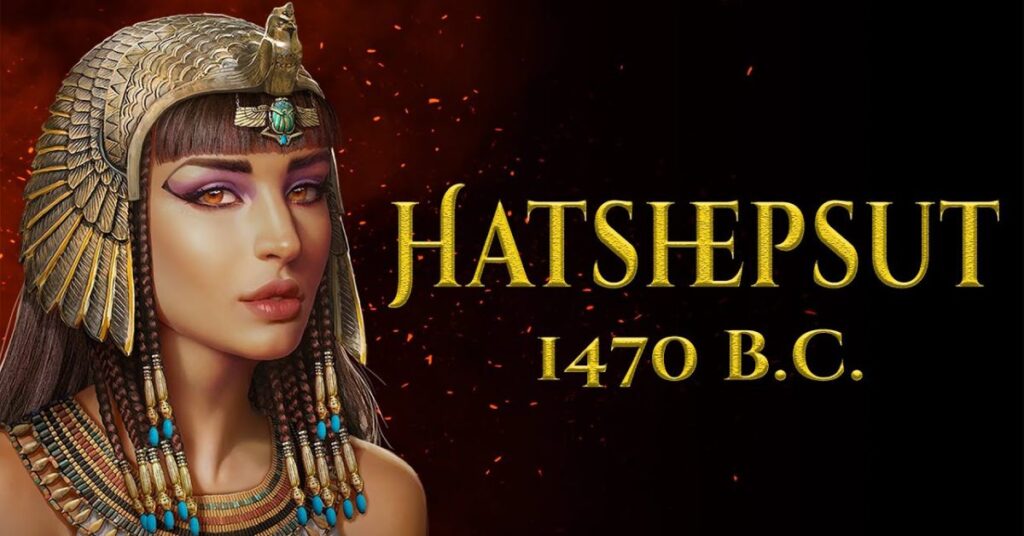When we think of ancient Egypt, names like Tutankhamun, Ramses II, and Cleopatra often come to mind. Yet, one of the most remarkable rulers in Egyptian history was Hatshepsut, the powerful queen who defied tradition to become Pharaoh. Her reign not only challenged gender norms but also marked an era of prosperity, monumental construction, and diplomatic achievement.
Early Life and Rise to Power
Hatshepsut was born around 1507 BCE, the daughter of Pharaoh Thutmose I and Queen Ahmose. As a royal princess, she received a privileged upbringing, learning religious rituals, political duties, and statecraft. She married her half-brother, Thutmose II, in line with royal custom to strengthen dynastic ties.
When Thutmose II died young, his son Thutmose III, born to a secondary wife, was too young to rule. Hatshepsut stepped in as regent, managing Egypt’s affairs on his behalf. However, she eventually took a bold step—proclaiming herself Pharaoh, one of the most daring moves in Egyptian history.
Breaking Traditions: Egypt’s Female Pharaoh
In a society where kingship was deeply associated with masculinity, Hatshepsut’s rise was extraordinary. To legitimize her authority, she adopted male regalia, including the pharaoh’s kilt, crown, and even the false beard. In temple inscriptions, she was often depicted as a male ruler, though the texts acknowledged her true identity as a woman.
By doing this, Hatshepsut reinforced the idea that her rule was not only valid but also divinely sanctioned. She emphasized her connection to the god Amun, portraying her kingship as ordained by the gods themselves.
Achievements of Her Reign
Hatshepsut’s reign lasted for about 22 years and is remembered as one of stability and prosperity. Unlike some pharaohs who sought glory in battle, she focused on trade, architecture, and internal growth.
- Expeditions and Trade: One of her greatest achievements was the famous expedition to the Land of Punt, which brought back treasures such as ivory, ebony, incense, and exotic animals. This boosted Egypt’s economy and strengthened its global connections.
- Monumental Constructions: Hatshepsut commissioned ambitious building projects across Egypt. Her mortuary temple at Deir el-Bahari remains one of the architectural masterpieces of ancient Egypt, showcasing terraces, colonnades, and detailed reliefs.
- Peace and Stability: Unlike rulers who glorified wars, Hatshepsut maintained peace, allowing Egypt to prosper without major military conflicts.
Legacy and Historical Erasure
After her death around 1458 BCE, Thutmose III took full control of Egypt. Later in his reign, Hatshepsut’s name and images were deliberately erased from monuments, temples, and official records. Historians debate whether this was an act of revenge, an attempt to reinforce male succession, or simply a political move to solidify Thutmose III’s legacy.
Despite attempts to erase her memory, modern archaeology has restored Hatshepsut’s place in history. Her temple, statues, and inscriptions reveal the story of a remarkable woman who defied norms to shape Egypt’s destiny.
Conclusion
Hatshepsut’s reign as the Female Pharaoh stands as a powerful reminder of leadership, resilience, and vision. She redefined what it meant to rule in ancient Egypt, leaving behind monuments of beauty and a legacy of prosperity. Today, she is celebrated as one of the greatest pharaohs—not only for her gender-breaking role but also for her wisdom, ambition, and contributions to Egyptian civilization.





